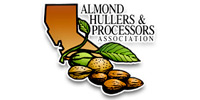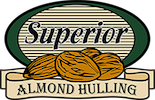Food Safety – GAP’s & GMP’s
The California almond industry has a robust program for preventing microbial food contamination, thanks in great measure to the Almond Board of California (ABC). While the grower and processor protocols developed by the ABC have been enormously successful, it will require a coordination of efforts between growers and processors to continue to protect our product’s integrity and its healthful reputation.
“Food safety must be maintained throughout each stage of handling almonds, from the orchard through shelling and grading, and ultimately from the manufacturer to the consumer. All segments of the almond supply chain must consider themselves to be food processors if they are to reach the ultimate objective – providing consumers around the world with the highest level of confidence in California almonds.”
– Almond Board of California
Food Safety for Growers – Good Agricultural Practices (GAP’s)
Good Agricultural Practices for almond growers have been developed by the ABC, who has published a quick start guide on their website for growers to access. While we won’t try to reinvent the entire program here, we would like to point out some of the key elements of the program. There are eight elements to the suggested program:
-
Documentation
Identifying your farm with field names and locations, outlining your operations from pre-bloom to post harvest, documenting supervisor and employee training, analyzing on-farm hazards that may impact food safety, and thorough record keeping for all GAP activities are all vital to the program. In the event of a product recall, nothing is more important than complete documentation of product handling all the way from the farm to the table.
-
Employee Training
It’s not enough for the grower to understand his food safety program, the employees of the operation must understand the ranch’s commitment to food safety and receive proper training on food safety hazards, from personal hygiene and handwashing to orchard sanitation, operational safety and equipment maintenance.
-
Fertilizer and Soil Amendments
Residues from any materials applied to the orchard should be a concern for food safety, but manure and compost in particular can also transfer pathogens to the almonds if they are not handled correctly. Bio solids or sewage sludge should never be applied. If manure is used, only completely composted products that have undergone pathogen reduction should be considered.
You should ask the compost producer for documentation that the composting temperatures were maintained at 131°F for15 days or longer, and that windrows were turned at least five times during the composting process. Microbial tests should show E. coli < 1,000 MPN/gram and Salmonella < 3MPN/4 grams (MPN stands for Most Probable Number). -
Water Quality and Source
This is a hazard assessment for another potential source of contamination. Microbiological water testing from each source of water availability is a core component of any food safety program.
-
Orchard Floor Management
Our favorite. Growers should consider a written program for orchard sanitation that considers resident and seasonal wildlife in the area, and keeps the orchard floor as clean, level, smooth and dry as possible. Training employees on proper orchard floor preparation and harvesting and windrowing would be one of the most effective farm practices influencing food safety.
-
Field Sanitation and Employee Hygiene
Training for year round and seasonal employees on their role in field sanitation is critical to your food safety program. Portable toilets are required for all production blocks. Field harvesting equipment and the vehicles used to transport the almonds after harvest must be clean and free of soil, debris, moisture, odors and other nuts.
-
Pest Control
Document all corrective actions taken in regard to pest control. Insects can vector plant diseases and pathogens, and can also attract birds, reptiles and amphibians. Preventing rodent and small mammal population increases can reduce the presence of predators.
-
Harvest and Delivery Sanitation
Harvest is a critical time and specific attention should be made to eliminate potential sources of contamination or conditions which could result in the proliferation of microorganisms such as molds that produce aflatoxin or bacteria such as Salmonella which can cause illness. In addition, steps should be taken to prevent the introduction of foreign objects or materials into the crop during the harvest process and delivery to the processing facility.
Cross contamination of harvested almonds with bacteria can occur if the equipment or transportation vehicles used have not been cleaned and inspected prior to use. In order to minimize the potential for cross contamination, it is sometimes necessary to sanitize the harvesting equipment and the transport vehicles/containers prior to use during harvest operations.
Your almonds should be properly dried before being picked up. Excessive moisture on the orchard floor at the time of harvest can lead to the proliferation of bacteria and mold if not dried before harvesting. If stockpiled, proper storage guidelines must be followed to prevent microbial contamination and mold growth. This is the reason for our quality requirements of 6% maximum moisture for almond meats, and13% for almond hulls. Superior will ensure that transportation equipment and stockpiling requirements for sanitation are met.
Finally, a successful program must be a continuing effort. A self-auditing checklist should be developed to ensure the effectiveness of your program.
To read this feature in its complete version, please visit Almond Board’s original article: Good Agricultural Practices
Food Safety for Processors – Good Manufacturing Practices (GMP)
Almond huller/shellers and almond handlers are required by the Code of Federal Regulations (21CFR110 – Good Manufacturing Practices) and by the California Health and Safety Code (The California Food Sanitation Act) to develop and maintain Good Manufacturing Practices (GMP).
Superior Almond Hulling has developed its food safety and sanitation program in conjunction with the Almond Hullers and Processors Association. This program relies heavily on the almond growers GAP program for the integrity and quality of the incoming almonds.



“Minimizing the incidence of foodborne illnesses resulting from crop contamination is a concern for all almond growers. Bacteria that cause foodborne illnesses, such as salmonella and E. coli, can be found in animal and human feces. The potential for contamination of almonds with these organisms increases during harvest, when the nuts are dropped to the ground.”
– ANR Publication 8126, University of California
Prevention of Contamination
We take great care to prevent the introduction of any contaminants to the product we receive, and to prevent potential cross contamination of processing lots from product co-mingling. Much like GAP’s for the grower, our GMP’s address documentation, employee training, water quality, plant sanitation, pest control and employee hygiene. Additional considerations for processors include HACCP (Hazard Analysis and Critical Control Points) and Product Recall Programs.
Product Recall Programs
As a first processor, the huller/sheller is very closely identified with the harvest operations, and the key driver for us in Product Recall is our Traceability Program. This gives us not only the ability to track food items through the chain of custody to its field of origin at the farm, but we also track every step of processing once it arrives at our facility. This includes dates and locations of stockpiles, fumigation treatments, weather, storage periods, lot processing information, moisture conditions, and finally, delivery to the handler.
Superior’s GMP program is crucial to protecting the quality of the crop produced under the grower’s GAP procedures. Superior Almond Hulling participates in an annual unannounced third party audit of food safety practices, receiving “Superior” ratings each year.
Leave A Comment
You must be logged in to post a comment.